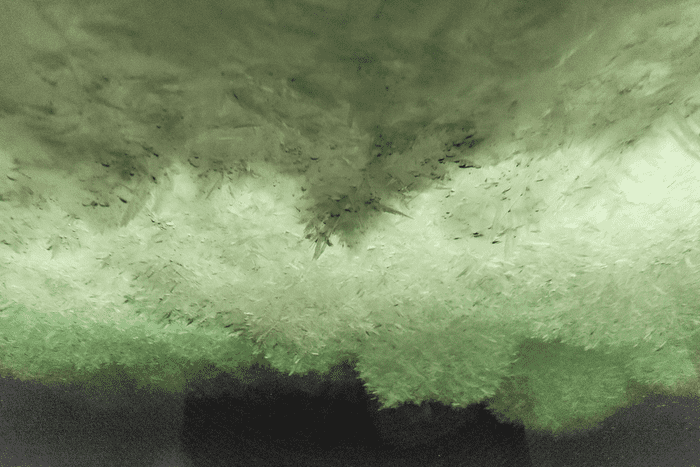The Search For Alien Life: Predicting Non-Xenomorph Species On Earth

Table of Contents
Understanding Extremophiles: Clues from Earth's Harsh Environments
Defining Extremophiles:
Extremophiles are organisms thriving in extreme environments, conditions once thought to be uninhabitable for life. Understanding these remarkable creatures is crucial to our search for extraterrestrial life because they demonstrate the incredible adaptability of life. Examples include thermophiles (heat-loving), halophiles (salt-loving), and acidophiles (acid-loving). Their existence expands the boundaries of what we consider "habitable," suggesting that life might flourish in environments far beyond Earth's comfortable norm.
- Examples: Pyrococcus furiosus (a hyperthermophilic archaeon thriving in volcanic vents), Halobacterium salinarum (a halophile living in saturated salt lakes), and Acidithiobacillus ferrooxidans (an acidophile found in acidic mine drainage).
- These organisms have unique adaptations, like specialized enzymes that function at extreme temperatures or salt concentrations, or cellular mechanisms that resist extreme pH.
- The existence of extremophiles hints at the potential for similar life forms on other planets or moons with extreme conditions, like Europa (Jupiter's moon) with its subsurface ocean or Mars with its past history of liquid water.
Predicting Alien Morphology Based on Environmental Factors
The Impact of Gravity and Atmosphere:
The physical characteristics of alien life would likely be heavily influenced by the planet's environmental factors. Gravity and atmospheric composition are paramount.
- Low Gravity: On a low-gravity planet, skeletal structures might be less dense and robust, potentially leading to taller, more slender life forms. Movement could involve different biomechanics, perhaps with enhanced jumping abilities.
- High Pressure/Anoxic Environments: Life on planets with high atmospheric pressure or a lack of oxygen could develop radically different respiratory and circulatory systems. Organisms might utilize alternative metabolic pathways, possibly relying on chemosynthesis rather than photosynthesis.
- Different Light Sources: Planets orbiting red dwarf stars, for example, might host life forms with unique pigmentation and metabolic adaptations to utilize the lower-energy light. Their vision and photosensitive organs could be vastly different from those found on Earth.
Beyond Physical Form: Considering Non-Carbon-Based Life
Silicon-Based Life: A Theoretical Possibility:
While carbon forms the backbone of all known life on Earth, silicon, with its similar chemical properties, has been proposed as a potential alternative basis for life.
- Advantages and Disadvantages: Silicon can form complex chains, like carbon, but silicon-oxygen bonds are stronger, making the formation of large, flexible molecules more challenging. The stability of silicon-based compounds in water is also a significant issue.
- Likelihood and Detection: The likelihood of silicon-based life remains highly speculative, and detecting it would require entirely new approaches. Its unique biosignatures would differ significantly from those of carbon-based life.
- Alternative Chemistries: Other biochemistries, such as those based on ammonia or other elements, are also theoretically possible, though the likelihood is currently unknown. These would likely result in life forms vastly different from anything we can readily imagine.
The Search for Biosignatures: Identifying Potential Alien Life
Detecting Unique Metabolic Processes:
Identifying alien life hinges on detecting unique biosignatures – chemical or physical indicators of past or present life.
- Techniques: Techniques like gas chromatography-mass spectrometry are employed to analyze the composition of planetary atmospheres and soil samples, searching for unusual gas ratios or organic molecules that could point towards biological activity.
- Earth Biosignatures as a Benchmark: A strong understanding of Earth's biosignatures is essential for comparison and interpretation of data gathered from other celestial bodies.
- Challenges: Distinguishing between abiotic (non-biological) processes and biotic processes can be extremely difficult. Careful analysis and cross-referencing of multiple data sources are crucial.
Conclusion:
This exploration of "Non-Xenomorph species on Earth" has highlighted the vast range of possibilities when considering extraterrestrial life. We must move beyond the science fiction tropes and focus on scientifically plausible predictions based on our understanding of extremophiles, environmental factors, and the potential for alternative biochemistries. The search for alien life requires a broad perspective, embracing the possibility of diverse morphologies and chemical compositions far beyond the familiar. Continue learning about the fascinating field of astrobiology, and explore credible resources to broaden your understanding of the possibilities of life beyond Earth – and the search for "Non-Xenomorph species on Earth" and beyond.

Featured Posts
-
 Despite Century By Chitra J And Ks Cricket Loss To Goa
May 27, 2025
Despite Century By Chitra J And Ks Cricket Loss To Goa
May 27, 2025 -
 Mob Land Release Schedule When To Watch Episode 6
May 27, 2025
Mob Land Release Schedule When To Watch Episode 6
May 27, 2025 -
 Regularisation Des Charges A Saint Ouen Jusqu A 80 Pris En Charge
May 27, 2025
Regularisation Des Charges A Saint Ouen Jusqu A 80 Pris En Charge
May 27, 2025 -
 Tariffs Overshadow G7 Finance Ministers Meeting A Silent Conclusion
May 27, 2025
Tariffs Overshadow G7 Finance Ministers Meeting A Silent Conclusion
May 27, 2025 -
 Sine Maceio Encontre Seu Emprego Ideal Entre 380 Vagas
May 27, 2025
Sine Maceio Encontre Seu Emprego Ideal Entre 380 Vagas
May 27, 2025
Latest Posts
-
 Savvatiatiko Programma Tileorasis 10 Maioy
May 30, 2025
Savvatiatiko Programma Tileorasis 10 Maioy
May 30, 2025 -
 Tileorasi Kyriaki 11 5 Odigos Programmatos
May 30, 2025
Tileorasi Kyriaki 11 5 Odigos Programmatos
May 30, 2025 -
 Savvato 15 3 Ti Na Deite Stin Tileorasi
May 30, 2025
Savvato 15 3 Ti Na Deite Stin Tileorasi
May 30, 2025 -
 Programma Tileoptikon Metadoseon Kyriaki 11 5
May 30, 2025
Programma Tileoptikon Metadoseon Kyriaki 11 5
May 30, 2025 -
 Odigos Tiletheasis Savvato 15 3
May 30, 2025
Odigos Tiletheasis Savvato 15 3
May 30, 2025
